Are you looking to reduce shopping cart abandonment of your eCommerce website?
Shopping cart abandonment is one of the most common problems faced by almost every eCommerce website. Sometimes your eCommerce website design drives away shoppers, Whereas most of the time checkout page issues give rise to shopping cart abandonment.
Other than eCommerce website design and checkout page issues there are other problems that abstain customers from performing the desired action. So the question is how to reduce shopping cart abandonment issues?
Don’t worry our marketing and eCommerce website design experts have got you covered, Below we have listed all the problems and solutions for reducing cart abandonment. But before that look at the below statistics to know what encourages cart abandonment?
In this article, we will help you to identify the reasons behind shopping cart abandonment and how you can resolve those issues to reduce cart abandonment.
If you are looking to improve your eCommerce sales and conversions then check our blog on Checkout Page Optimization: Different Way To Improve Checkout Page Conversion In 2020
What is Cart Abandonment?
Cart Abandonment refers to the term used in eCommerce when a customer adds the item into the cart and leaves the page without completing the action. Even if your customer moves the cart item into the checkout page and leaves the website without making the final purchase then it is considered as Shopping cart abandonment.
Cart abandonment differs depending on the different industry as shown in the above bar chart. If you wish to calculate the shopping cart abandonment rate then you can do it by dividing the total number of completed purchases by the number of carts created subtract by 1 X 100 to get the cart abandonment rate.
“About Us: SFWP Experts is an award-winning San Francisco website design company specialized in offering conversion-centric custom web design services to all sizes of businesses. Our professionals can create highly effective and fully responsive eCommerce as well as a standard website. We at SFWP Experts have a team of content writing and marketing experts, dedicated to delivering high-quality and fact-based content to educate our audience about the latest trends, tools, tips, and more.“
Why do customers abandon carts?
Whether you are aware or not but today more than 70% of the shoppers abandon the cart after facing various problems during the checkout process. Yes, its true earlier customers used to compromise, but with the increase in the number of eCommerce websites, it has become essential for every website to minimize every small mistake.
Lack of transparency into checkout process elements like hidden shipping cost, no detail about the return policy, and more are the reason behind shopping cart abandonment. But it’s not limited to that, there are other reasons that give rise to shopping cart abandonment.
So, Before jumping onto how to reduce shopping cart abandonment first we need to identify why customers abandon carts? Once you are aware of the problem then it will become easy for you to find the proper and effective solution.
Confusing Checkout process: You the customer are landing on your eCommerce website to get satisfactory and easy navigating to final purchase. Creating a long and baffling eCommerce checkout process frustrates customers and becomes the major reason behind the shopping cart abandonment. A multi-step checkout process can benefit you but it frustrates customers and slows dons their buying process.
High shipping cost: Shipping costs are not visible at the beginning of the page, customers come across those shipping costs only after entering into the checkout page. If your customer comes across high or unexpected shipping costs that they didn’t anticipate then it will directly affect the final purchase. Offering high shipping costs automatically drives the customer away from the checkout page that becomes the reason for shopping cart abandonment.
Security Issues: There is no doubt that today every user wants their account and payment details to be secured. With the increase in online frauds, users are becoming more cautious about security. If your site visitor fails to find a secured environment or HTTPs secured website then without any hesitation they will abandon the cart.
Forcing visitors for Account Creation: Visitor’s details help eCommerce websites in different ways like contacting them, retargeting and more. But forcing them to create an account before purchasing any provides leads to cart abandonment issues. A first-time shopper may not show interest in creating an account. If your e-commerce website is making it mandatory for users to create an account then you are already losing lots of customers.
Unclear Refund And Return Policy: Whether you are aware or not but today many online shoppers have started to face difficulties like getting the damaged product, color change, receiving the different products, and more. A clear refund policy encourages shoppers to buy the product. Whereas an ambiguous return policy gives rise to car abandonment. Every shopper expects a clear refund and returns policy so that if they receive a wrong or damaged product they can easily return and receive a new one.
Ambiguous Delivery date and time: Online Shoppers prefer accuracy if your checkout page is displaying unclear delivery time and date like within 10 days delivery, get it between 5-10, and more then your shopper will abandon the cart without even getting next thought. There are many websites that are offering accurate delivery time like get it on Wednesday 10 June and more.
Quantity Restriction: Most of the time shoppers don’t add product quantity just to check whether they can buy them or not. But there are times when your product can be liked by multiple people and the shopper might be ordering for every one of them. Putting restrictions on product quantity can frustrate the customer and they may abandon the cart without even making a single purchase.
Less payment option: Every shopper has a different payment method some may prefer to make payment through PayPal, Skrill, Apple pay, and more. Whereas most of them like to make payments through Credit Card, debit card, or gift cards. Offering fewer payment options to shoppers gives rise to shopping cart abandonment.
Slow website and app: It falls under SEO but a slow loading website and checkout page give rise to shopping cart abandonment. Very few customers show interest in making a successful purchase after getting a slow website experience. Mainly if your checkout page is slow and flooded with bugs then your shopper may face difficulties in filling the shipping as well as personal details. These types of problems drive away shoppers and give rise to cart abandonment.
Checkout page without the “Apply Coupon/Promo code” option: There shouldn’t be any discussion on the importance of coupons. It is one of the most effective ways to drive conversion. If your eCommerce website is failing to offer coupons and promo code then your shopper will not hesitate to abandon the cart. Because there are a lot of competitors out there that are offering various coupon codes to attract shoppers.
Next after identifying shopping cart abandonment issues let’s dive in and check how you can reduce cart abandonment
Tips to reduce shopping cart abandonment to optimize your sales and conversion
1. Include Progress Bar in the Checkout page
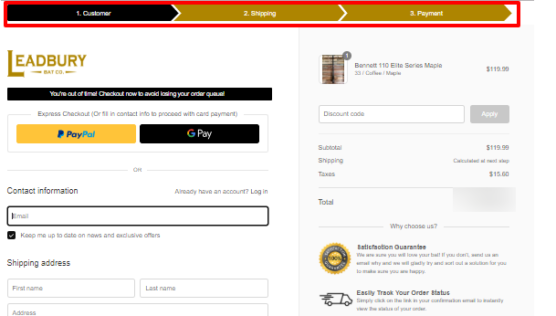
If your eCommerce website is using a multi-page checkout process then make sure you include progress bars in your checkout process. Because a checkout process contains multiple elements that are required so that the product can reach the right place.
If your Shoppers are aware of where they are and how many more steps are left then it becomes easy for them to proceed with the checkout process. This type of progress bar makes it for the shopper to edit and make changes in the previous steps.
By adding Progress bar in your checkout process you are eliminating the fear of extra time and cart abandonment. You are informing customers that they have to go through only a few steps to make a successful purchase. These type features motivate and encourage customers to visit back on your website to make their next purchase.
2. Add a thumbnail of products in the Checkout Process
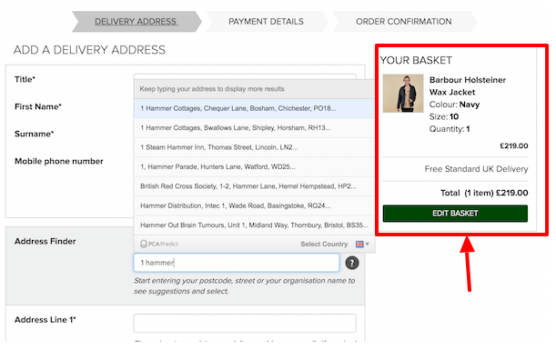
Shoppers don’t forget the products they are buying (until they have a list of 10 products) but like progress indicator adding thumbnail of the product in the customer’s checkout page enhances their buying experience and encourages them to make the final purchase.
These types of thumbnails help shoppers that have multiple products in their cart. While making a purchase from the physical store customers have access to see all the products they are buying. Adding a thumbnail to your checkout process reflects the same experience. To make it more effective you can also display the cart item on the checkout page.
So, if the customer forgets to add the product from the cart page, they can do it from the checkout page. Adding a thumbnail has a lot more benefits than you can imagine. It will help you to boost your eCommerce website sales, conversion, and abandon rate.
3. Offer Various Payment Options
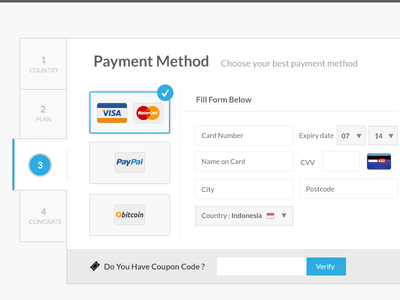
Earlier we have mentioned that eCommerce is all about customer satisfaction. Today most of the customer has a different method to make payments on an online store. Very few customers have access to all the payment options. Offering a single payment option can frustrate customer and there are chances of leaving your website without making any successful purchase.
There is no doubt the credit card option should be there on your eCommerce website. But other than that customers have access to different payment options like Paypal, Google Wallet, Apple page and more. Mainly mobile payment options like Apple page and google wallet is becoming more popular among customers.
If your website is failing to offer different payment options then you are creating a barrier between your customer and sales. Offering different payment options to the customer increases the chances of sales and reduces cart abandonment rate.
Most of the time customers have their balance in the apple pay and google wallet. Offering different payment option make it easy for the user to make use of those balance in your eCommerce website. Offering different payment option encourages the customer to make their next purchase from your online store.
4. Built trust in Transaction Page

Today e-commerce website owners don’t pay much attention to transaction form but it plays a crucial role in customers’ purchase decision making. An untrustable transaction form can drive aways your customers from the transaction page. Because by asking to fill transaction form you are asking their personal details more personal than contact details.
A transaction from include credit card and debit card datils. If a customer doesn’t feel secure in your transaction page then without any hesitation they will abandon your website without making any purchase. Whereas a trustable transaction page that is assuring customers about their card detail safety can encourage them to make a successful purchase.
So the question is how to make the transaction page secured?
Use your transaction page as the source of opportunity to build trust with your paying customers. Adding trust or security logos in your transaction page can assure you customer about the safety. According to Shopify, 61% of the online shopper fails to purchase the product by not finding any trust logo on the transaction page.
For example, if your transaction page is having Norton certified logo or verifies by the visa logo or Verisign secured logo then it will build trust with the shopper and encourage them to buy the product. Not only that but it also encourages then to return back on your website to make their next purchase.
5. Provide Guest Checkout Option
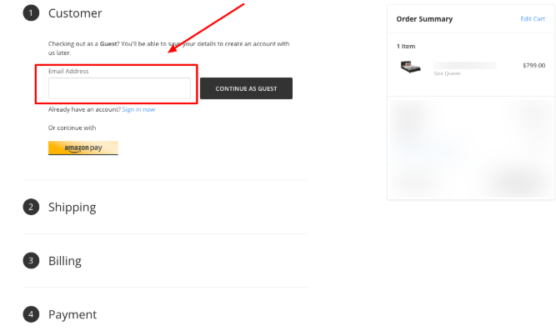
Earlier we have said that very few customers that land on an eCommerce website for the first time create an account. If your eCommerce website is making it mandatory for the customer to create an account then you are already losing lots of customers.
Yes, creating an account helps you to access customer data so that you can target them for new products and inform them about the new launch. But forcing them to create accounts is not a good choice because these types of activities give rise to cart abandonment.
Filling all the information, then verifying the email address then coming back on the shopping cart to purchase a product is a lot to ask from a new customer. Instead, you can offer them guest checkout as well as account creation options.
Guest checkout will not allow you to get each and every data but it can persuade shoppers to become your paying customer. Offering these types of features saves time and boosts sales. In guest checkout, you can get your customer email id as shown in the image below.
Instead of encouraging them to create an account at the beginning, you can ask them to create an account after they make their purchase. If your service was satisfying then they will never hesitate to create an account with your website.
6. Transparency in extra charges (shipping cost)
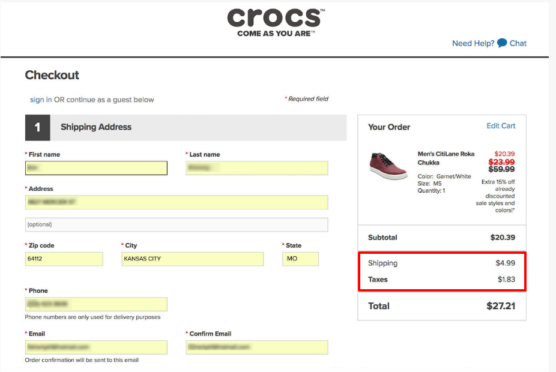
Transparency is the key to success. Today more than bad site experience, a customer gets frustrated after discovering all the hidden costs at once in the checkout page mainly the shipping cost.
Your shipping charges play a crucial role in encouraging the customer to either make the successful purchase or abandon the cart without making a purchase. For example, if a customer is landing on your product page and the cost displayed is $30 (discounted rate) then it may excite them. But When he/she moves the product to the checkout page and discovers the actual cost of the product including all the charges it becomes $48.
Then what do you think the customer will make the purchase or not?
You have to understand that customers hate paying the extra costs, mainly the shipping cost. Because they know there are a lot of eCommerce websites out there that are offering free shipping to their users.
Now you are aware then customers hate paying extra shipping cost but more than they hate seeing extra surprising cost. So to overcome that you can include the average shipping cost in the product cost (depending on location) to encourage customers to buy the product. Make your customer aware of the extra charges that they will be getting on the checkout page and offer authentic reasons on why you are adding those costs.
7. Include Live Chat Support
Undoubtedly every customer faces some problem while making the purchase form an eCommerce store. Some time product details confuse them wheres as most of the time checkout page creates confusion.
Every shopper haves a few questions that become barriers during the final purchase. To overcome those barriers it is important to offer live chat support or redirect customers to the FAQ page. Live chat support is the most effective way to persuade customers to make their final purchases.
Your agent can not only solve user’s problems but they also persuade and encourage them to make their purchase instantly. Whether you are using the WordPress website or HTML website you can easily integrate live chat plugin to make your eCommerce website more effective and efficient.
8. Create and Showcase refund Policy
Today before making the final purchase customer check each and every detail mainly an eCommerce website return and refund policy. Because every shopper is aware of the online shopping frauds like receiving different products, damaged products, and more.
An ambiguous refund and return policy can drive aways your customer and there are chances that your customer may never return back on your eCommerce website. Wheres as a clear refind and return policy assures them that if anything goes wrong with the product delivery they can easily replace, return, and refund the product.
Most of the time offering these types of policies improves your eCommerce website customer experience and encourages guest customers to return back to create accounts and make their next purchase form your online store. In simple words, it is the easiest way to reduce abandoned cart rates and improve sales and conversion rates.
9. Strong CTA Message in the Checkout page
Many eCommerce websites think that if the customer has added a product in the checkout then they don’t need any incentive to buy that product. Because of that, they create a simple checkout page with a mediocre call to action buttons.
Adding CTA in the checkout page is essential but the message in the CTA plays a crucial in persuading customers to take instant action. A confusing message with ambiguous meaning can distract customers wheres a strong message with clear meaning can encourage them to purchase the product.
Make sure while creating CTA of the website the message is consistent throughout your checkout process. Use strong and persuasive CTA messages on the checkout page to encourage customers to buy the product. Adding location-specific messages in the checkout page makes the customer buying experience more effective.
10. Remarketing Product to Abandoned cart user
One of the best and most effective ways to drive back abandoned cart users is by retargeting and driving them back on your cart page. Remarketing is one of the essential aspects of a successful eCommerce website. Because today most of the visitors abandon cart due to small issues. Retargeting customers allows you to drive then back on your website and encourage them to purchase the abandoned product.
So the question is how to retargets customers back on the website?
Compared to other platforms and methods email are the most effective way to drive abandon cart customer back on your website. You can create an attractive email with an eye-catchy incentive to get them back on the checkout page. You can also make use of Facebook ads and Google ads to grab your visitor’s attention.
Compared to sponsored ads email are more effective as it allows you to communicate with your audience. Using emails you can ask what problems your customer faced while making the purchase. But make sure to offer incentive because it was your mistake that drove them off and providing small incentives can drive them back on your website.
Summary
Makes use of below tips to reduce the cart abandonment rate in your checkout page.
- Recognize leak in your conversion funnel
- Optimize your checkout page speed and website speed as well
- Don’t hide your shipping cost
- Optimize your checkout call to action (CTA’s)
- Clearly display your return and refund policy
- Offer guest checkout page option
- Optimize your website navigation
- Add product thumbnail throughout checkout page
- Display cart option in the checkout page
- Include progress indication in the checkout page
- Offer multiple payment options
- Build trust in the transaction as well as page
Conclusion
Cart abandonment is one of the common issues faced by every eCommerce website. Sometimes these problem occurs due to small issues in the checkout page and product page. From the different eCommerce statistic, it is very clear that a slow and confusing checkout page confuses the customer and encourage them to abandon the website.
We have listed all the problems and tips that can help you to optimize your eCommerce website and its checkout page to reduce abandonment. Whenever you make changes in the checkout page make sure you check its effectiveness by testing it manually and through customer feedback. Most of the time changes made to checkout page don’t provide impactful results.
Frequently Asked Questions
1. What is a good abandonment rate?
Typical cart abandonment differs between 60% to 80%. If your website is having an optimized product page and checkout page then the cart abandonment rate may vary between 20% to 25%.
2. Why is shopping cart abandonment a problem for retailers?
Most of the time customers abandon cart after discovering extra shipping cost or the hidden charges in the checkout page. These type of common problems encourages the customer to abandon the cart which creates a problem for retailers. Customers don’t want to pay extra shipping charges. Avoiding these types of small and common mistakes can reduce cart abandonment rates.
3. How do I email abandoned cart customers?
Use the below tips to create a persuading and conversion-centric email that can encourage customers to make a purchase from your store
- Craft an eye-catchy email subject line
- Make your introduction text more attractive and
- Make your CTA in email more specific that redirects
- Offers different incentive like coupons and discount code
- Add review and social proof in the email to win the trust of your abandoned cart customer
- Create persuasive closing text
4. How can I reduce the cart abandonment rate?
Below tips can help you to optimize your checkout page and reduce the cart abandonment rate.
- Include progress indication in the checkout page
- Build trust in the transaction as well as page
- Add product thumbnail throughout checkout page
- Don’t hide your shipping cost
- Display cart option in the checkout page
- Clearly display your return and refund policy
- Optimize your website navigation
- Recognize leak in your conversion funnel
- Optimize your checkout page speed and website speed as well
- Offer multiple payment options
- Optimize your checkout call to action (CTA’s)
- Offer guest checkout page option
5. When should I send an abandoned cart email?
After your customer abandons the cart sends the first email within the first hour of abandonment. The first email should be sent before your customer leaves the computer. This way you can encourage them to return back on your website can make a successful purchase. Offer them the incentive to make the process more effective.,